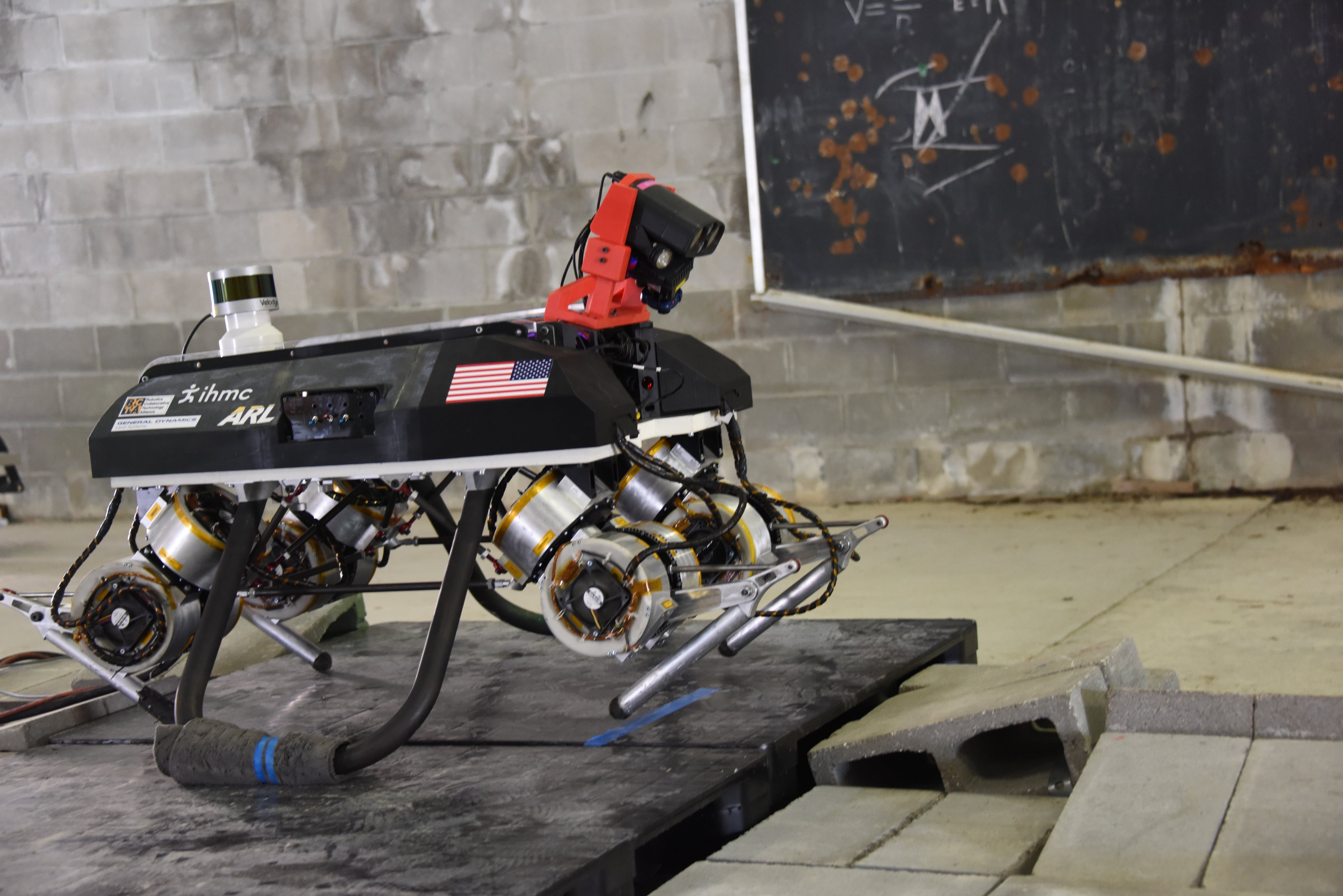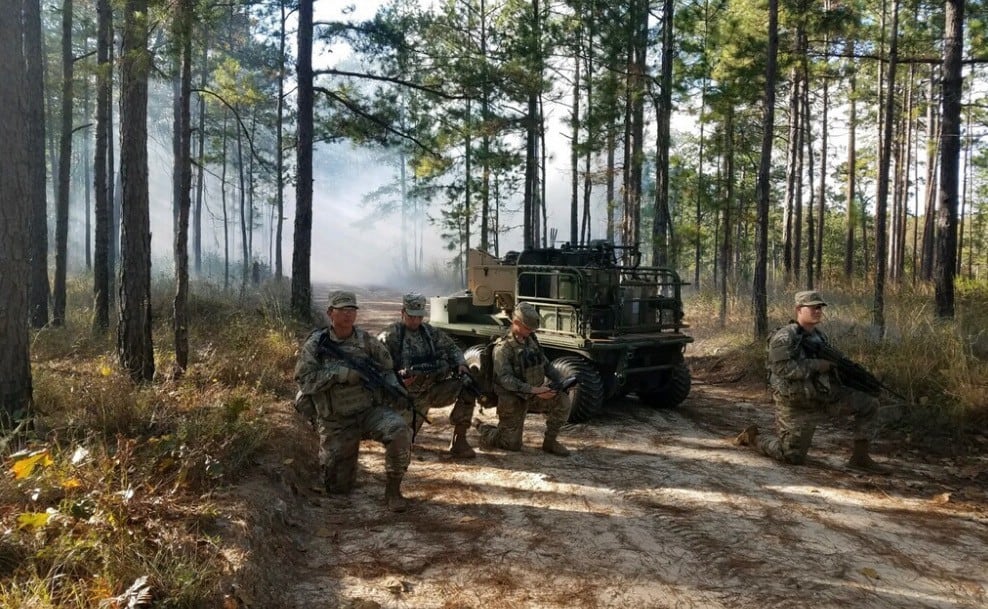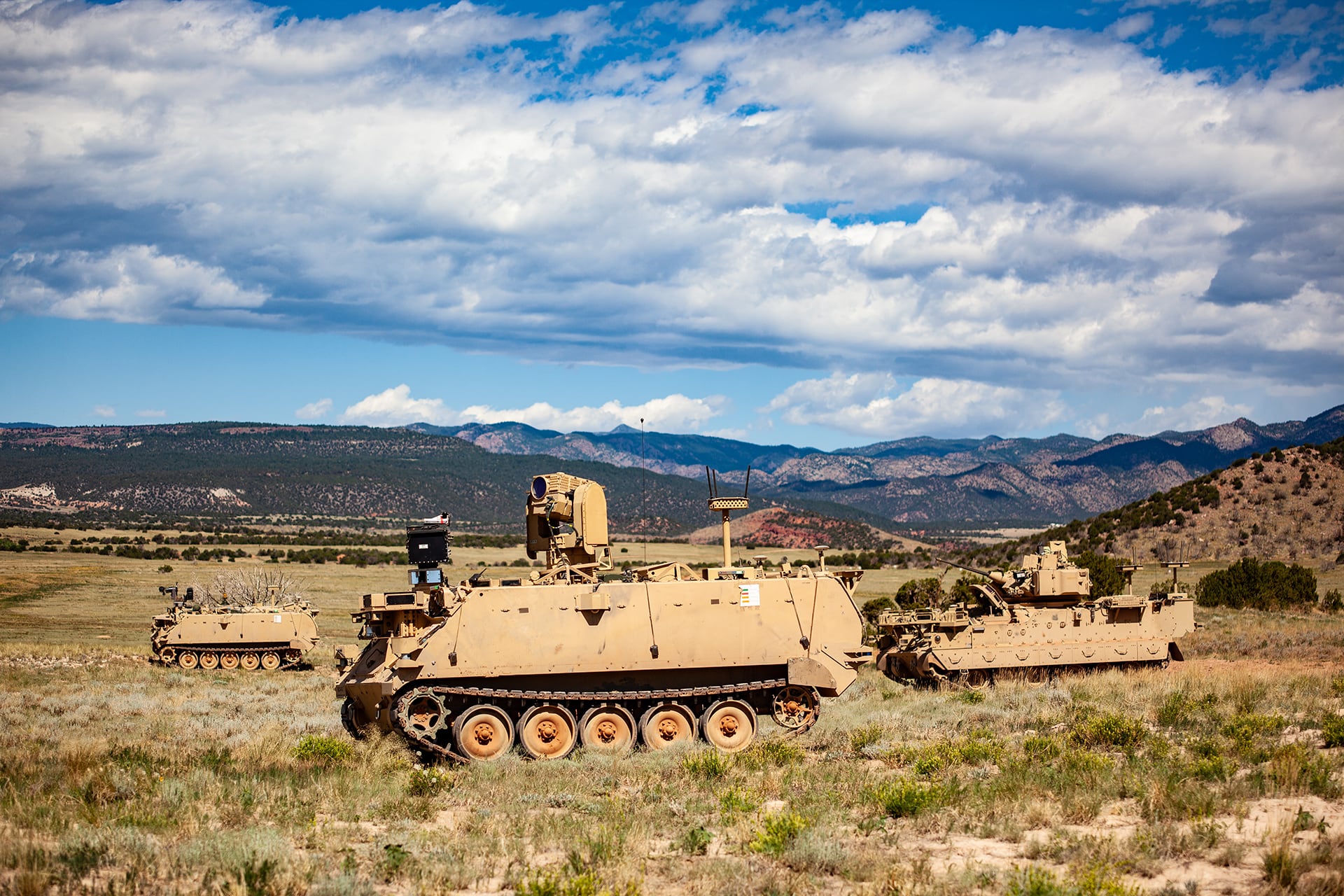Though the current main battle tank, the M1 Abrams, is expected to hum along in the center of the armored formation for decades to come, some kind replacement is on its way.
But rather than swapping a tank for a tank, most experts in the field are looking to a family of vehicles option that will take tank-like capabilities and spread them across crewed and crewless platforms for better survivability.
“If you think of a tank, you’re thinking in the wrong direction. Think of what a tank provides,” Jeff Zabinski, the Army Research Lab’s director of weapons and material research, told Army Times. “We can’t just think in terms of, ‘oh, I’m just going to put a chunk of armor out there.’”
RELATED

The Army is doing more than simply upgrading existing vehicles and fueling the next steps in ground fighting over the coming decade. Scientists at ARL such as Zabinski and Dr. Scott Schoenfeld, senior scientist for terminal ballistics, are envisioning how to do the work of armor without armor.
The key to that is distributing the functions of a tank, from sensing and firepower to protection. Some of that does still involve heavy metal moving around the battlefield — sometimes with a crew; sometimes without. But protection can also mean not being seen, or even being seen as something else. That’s where electronic warfare, masking and hiding in plain sight of sensors can play a role.
“Armament can be totally different than what we were [historically] constrained with,” Zabinski said.

Armor went from monolithic steel to spaced plates and then explosive-driven plates to respond to advancing, anti-armor threats, Zabinski said. Armor also moved from strong metals to ceramics or composite materials that are lighter and designed to absorb impact differently at the molecular level.
More powerful computers and algorithms are helping scientists at ARL and elsewhere factor in massive numbers of interactions that can be used to “bend, break and destroy penetrators on contact,” hitting the projectile before it ever reaches an Army vehicle, Zabinski said.
And with advances in autonomy and remote controlling, new approaches are now possible that were previously not.
“If there is no human in proximity to the weapon, we can develop much higher performance once humans are stood off,” Schoenfeld said.
Space onboard, now designed for humans, can be shrunk or gotten rid of, making smaller machines that can do similar or new tasks.
And rather than simply taking a hit to heavy armor and surviving, the future of armor’s function and protection could be pushing, deflecting, coaxing or turning an adversary’s attack rather than absorbing it, Schoenfeld said.
Regardless of the defense, some strikes will get through.
That’s where “intelligent, sacrificial robots” can put themselves between humans and harm, Schoenfeld said. That’s in a scenario where humans are still on the battlefield, likely in a tank-like vehicle.
“These platforms are still made of material that will encounter bullets and bombs but made of material enough that the robots are damaged without residual harm to humans,” Schoenfeld said.

But those cannot necessarily be one-and-done bots. They may still need to function after being hit, because even expendable platforms cost money.
Those same future robots can be made with cutting edge materials being researched now that can either “degrade gracefully” or “self-heal,” Schoenfeld said.
“Think about the fact that body armor does not just stop a bullet but must do so with limited deformation and limited mortality for the human in the rear,” Schoenfeld said. “If that material could stretch without limit, the armor would be much lighter and much more flexible.”
Some future robot armor could even have materials that allow bullets to pass through.
Schoenfeld painted a picture: imagine a robot that looks like the coronavirus, a central ball or sphere with many “arms” protruding from it.
Say this robot could both roll and crawl around the terrain. If it takes a hit, the arms might be made of materials built to deflect those strikes from the center, where the valuable components that control, communicate or explode, reside.
All of these advances may not look like the diesel-driven behemoths of the battlefield today, but at their core, they’ll do what armor has always done — protect soldiers while delivering firepower.
“It may not look like the ‘heavy’ armor on a tank, but it will be armor nonetheless,” Schoenfeld said.
Todd South has written about crime, courts, government and the military for multiple publications since 2004 and was named a 2014 Pulitzer finalist for a co-written project on witness intimidation. Todd is a Marine veteran of the Iraq War.









